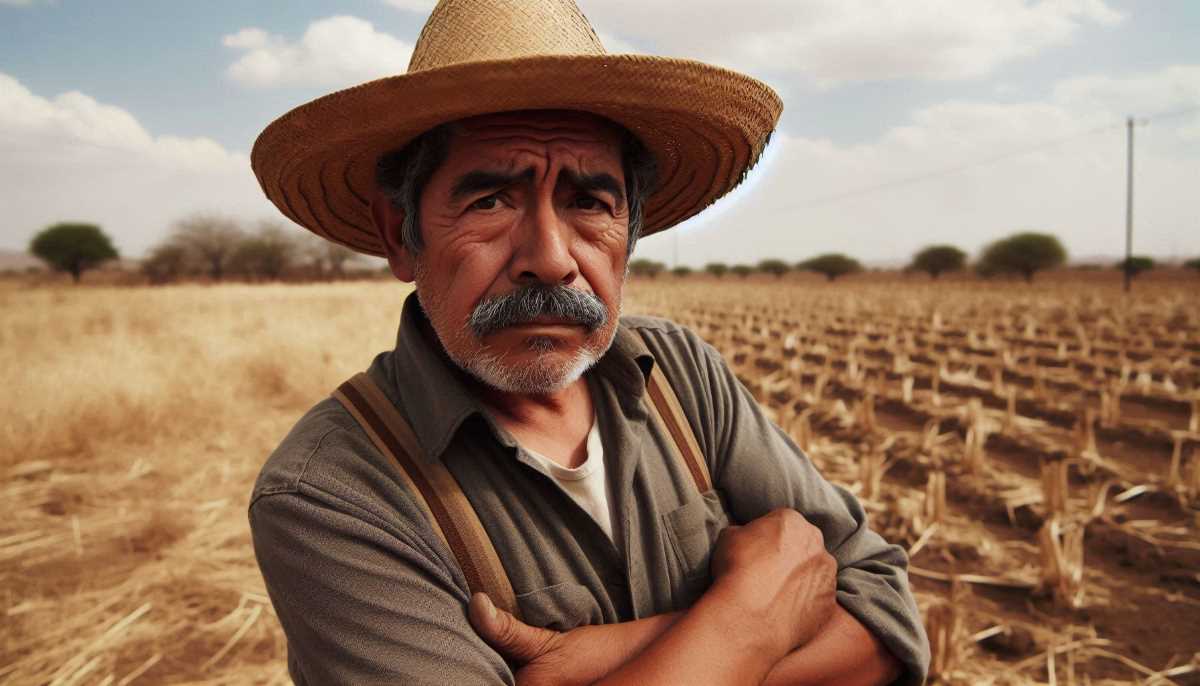Can Mexico Reclaim its Land Before it Turns to Dust?
Desertification and drought threaten Mexico, fueled by climate change and human actions. Traditional farming suffers, forcing rural youth to cities. This land loss weakens cultural heritage and risks turning fertile soil to dust.

Desertification and drought are acute problems in Mexico that generate poverty, especially affect vulnerable groups, especially in rural areas, and cause loss of cultural traditions; Therefore, it is necessary to become aware of the situation and implement clear actions to preserve the health of the soil, considers the expert from the Cuautitlán Faculty of Higher Studies, UNAM, Gustavo Mercado Mancera.
The specialist in management and preservation of natural resources highlights that today we realize that not only arid ecosystems are in danger, but also jungles, temperate forests and other environments face a process of desertification.
Although there are provisions in the legislation for care and conservation, we continue with the subjugation of natural resources, generating the causes of soil degradation.
When we address these issues with decision makers, they like to talk about drought more, because they provide support in one season. However, in more than 40 percent of the country we have aridity and semi-aridity, and that is a permanent condition.
The professor of Agrometeorology recalls that human activities cause these phenomena to be exacerbated and cause thousands of deaths worldwide due to natural disasters related to lack of water and migration. For example, during the 2010-2011 drought there were well over 70 thousand heads of cattle in Mexico and there were people who emigrated to the United States.
In an interview on the occasion of the World Day to Combat Desertification and Drought, established by the United Nations General Assembly in 1994, the expert elaborates:
Even arid lands – characterized by being places of low rainfall, but with a great biodiversity of flora and fauna – also suffer from desertification problems due to overgrazing, soil erosion, in addition to prolonged droughts.
According to the researcher, in the past 50 years the effect of climate change has accelerated. Beyond the degradation of the land, the loss of productivity and the biological structure of the original soil, this process can be irreversible.
Unfortunately, it is like in the case of water, they tell us “take care of it, shower quickly, don't waste it, reuse it”, but there are companies that continue extracting it without stopping, no one tells them anything; The difficulty involves us all. There are communities near these companies that have depleted their aquifers, so the situation also becomes political, explains Mercado Mancera.
The expert remembers that in 1998 the FES Cuautitlán weather station recorded a maximum temperature of 34 degrees Celsius. However, this year there were six days in which that figure was exceeded: on May 11, they reached 34.7 and on the 25th of the same month, 35.6 degrees Celsius.
Mercado Mancera affirms that this exacerbates the drought problems that occur naturally in this season by adding high evaporation, loss of vital liquid, overexploitation of aquifers, dams in dry water reservoirs or with capacities less than 30 percent; For example, the Cutzamala system is below 50 percent of its capacity.
By elaborating, he specifies that it is not possible to talk about this issue without associating it with logging, deforestation, generation of fires or burning for the next crop cycle, a practice that degrades soil fertility. That is another cause of desertification, because organic matter is eliminated, the beneficial microflora in the soil is lost and there we fail.
Another situation causing desertification is the change in land use, since the urban area continues to grow significantly; One of the reasons is that people move from rural to urban areas.
In the 50s of the last century, in Mexico and in the world, the rural population represented 70 percent of the total; In the big cities it was 30 or 35 percent, but today the dynamic has been reversed and is concentrated in the cities; rural areas have been abandoned.
Mercado Mancera also refers to the problem of the loss of culture in the communities because young people go out to look for better life opportunities. They return dressed in jeans, tennis shoes, and with no desire to return to the field; That is to say, there is a great and severe transculturation in those places.




